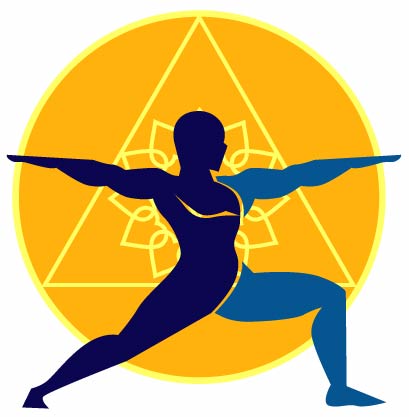Your workplace experience is a prime factor in your overall health. The experience is affected by numerous components including life/work meaning, environment (activity demands/physical environment), interpersonal relationships, and business culture (including mission, and initiatives). A regimented “work” life can be hazardous to the well-being of many participants, both physically and psychosocially. Your “workplace experience” both reflects your current state of wellness and leads to behaviors which are either nurturing or defeating.
A. Life/work meaning:
Do you feel at the mercy of a dead-end job? Are your talents utilized or even known?
Have you settled into a position or career that offers something other than the expression of your innermost talents or needs? This job may entail more motivational self-talk: “it is a stepping stone”, or “they own my body but not my mind”, to get you through the door each day, but you get through.
*Or maybe you feel a deep personal connection to the work you do; it makes sense in the whole scope of things; you can see the patterns from early interests manifest.
B. Environment (Activity demands/physical environment):
Do you participate in sedentary work for most of the day? Well, our need for physical activity hasn’t changed for eons and we will have a price to pay.
Are you stuck in awkward poses for much of the day, in an environment of unnatural noise, light, sharp edges, extreme temperatures and unyielding standing surfaces?
*Or maybe your work environment is temperate and includes a healthy mix of movement and time for contemplation.
C. Interpersonal relationships:
As a frontline worker do you question the need for hierarchy or just laugh at their foibles?
As a manager, are you puzzled or angry by some of the requests from your staff? What about others who seem to exist primarily to criticize, those who never look any deeper into surface appearances.
*Or maybe you are supported whole heartedly, and work with reasonable and fun people.
D. Business culture (including mission and initiatives):
How does it feel to work with initiatives that seem short-sighted, imbalanced, or redundant? Or those centered on unfettered growth only for growth’s sake. Do new policies appear as if by magic at the first sign of trouble with only a moment’s consideration?
*Or maybe you love the mission and initiatives, and your part in their execution. You invest your time and reap personal growth, and a feeling of belonging. You have faith in the drivers.
If all seems well, then it is, today. However, if you find yourself performing your duties in any of the more negative scenarios portrayed, please read on.
Yoga Therapy (YT) (meditation, Yoga breathing and physical exercises) and Occupational Therapy (OT) offer some tools and techniques that may ameliorate some of the stressors of a bad work experience. Some Occupational Therapists (and Physical Therapists) have used many of the modalities found in Yoga. OTs combine those modalities with their traditional scope of practice which includes addressing the components and the performance of functional activity, stress management, self-awareness: for safety and psychosocial success, and postural and balance concerns.
A. Life/Work meaning
Yoga therapy can address life/work meaning indirectly by increasing overall awareness through unique yoga positions, and breathing techniques. Increases in motor awareness may lead to emotional and psychosocial awareness. Does that sound like a stretch to you? Through meditation, discernment is improved, and life choices could be more relevant to long-term planning and the expression of personal qualities. Meditation can add a clarity rarely found in normal levels of consciousness. What can you hear when you stop the everyday chatter? Hopefully something about your mission. OTs are bound to the use of meaningful activity. An appropriate evaluation (either by OT or a specially trained YT) would help uncover and decipher which activities and talents are conducive to your well-being.
B. Environment (Activity demands/physical environment)
Both Yoga Therapy and Occupational Therapy promote activity. However, many OTs are experts in both identifying and modifying harmful movement patterns and environmental stressors (ergonomics). General advice sometimes includes: limiting the height and occurrence of repetitive reaching, and teaching functional motor patterns that would include a more neutral position of hand and wrist. Moderating temperatures and improving work surfaces would be suggested. With a background in life and task balance as well as kinesiology and ergonomics, OTs may suggest sufficient rest and stretching breaks, and adjusting shift work. Both Yoga Therapy and Occupational Therapy address muscular and fascial imbalances aggravated by work tasks or positions.
C. Interpersonal relationships.
The self-awareness that meditation and other Yoga Therapy modalities can facilitate, allows a conscious delay giving the practitioner time to settle and possibly think before responding verbally to others. With improved ability to manage physical and emotional stress and a concurrent competence to decontract tight muscle groups, there will be fewer tendencies to release physical and mental stress verbally especially when another is involved.
D. Business culture and initiatives
Meditation and Yoga Therapy in general, gives your body/mind the techniques and time to retune. When you balance yourself, and then your day, you are able to see more clearly. You not only see/feel details better, you are able to pull back and see the big picture. This leads to better personal and corporate decisions.
I’ve offered a discussion on some of the components which create the work experience and ways they could be improved. Worklife is a reality for many of us, and we must be cognizant of the complete experience and its’ ability either to lift or crush the human spirit.
